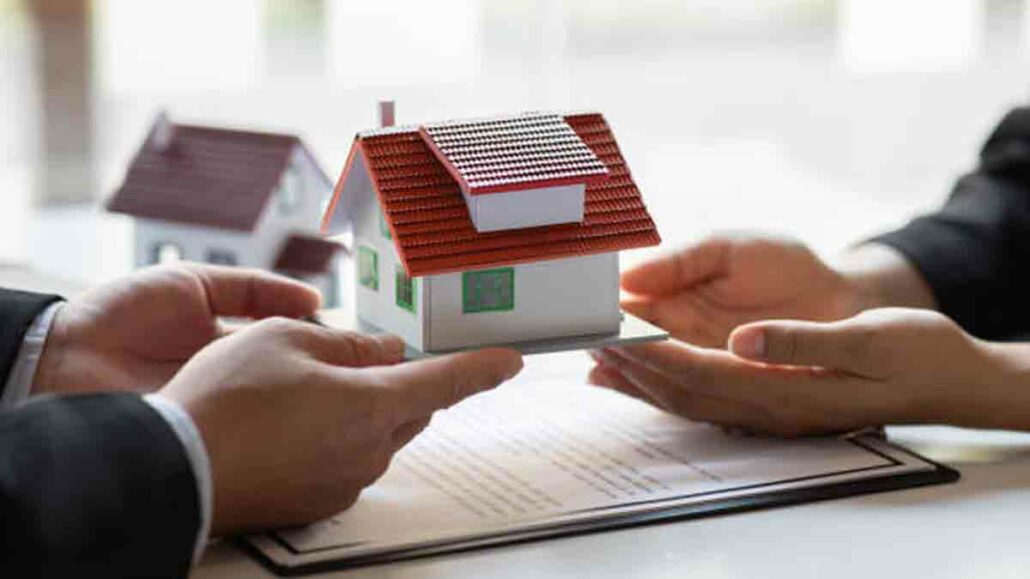When it comes to homeowners insurance, understanding the different coverages is essential. One crucial component often overlooked is Coverage B homeowners, which specifically protects detached structures on your property. These structures, such as garages, sheds, fences, and detached workshops, are separate from your main dwelling and can be susceptible to damage or loss.

Coverage B provides financial compensation in the event of damage to these detached structures due to covered perils like fire, theft, vandalism, or natural disasters. This coverage is essential for protecting your property’s value and ensuring you have the resources to rebuild or repair any damaged structures.
What is Coverage B on a Home Insurance Policy?
Coverage B is a part of most homeowners insurance policies that provide financial protection for detached structures on your property. These structures might include:
- Garages: Both attached and detached garages.
- Sheds: Storage sheds for tools, equipment, or other items.
- Fences: Wooden, vinyl, or other types of fences.
- Detached workshops: Separate buildings used for hobbies or crafts.
- Other outbuildings: Any structures that are not part of your main dwelling.
Coverage B typically covers damage to these structures caused by covered perils, such as:
- Fire: Including wildfires and house fires.
- Theft: Burglary or theft of property from the detached structure.
- Vandalism: Damage caused by malicious acts.
- Natural disasters: Hurricanes, tornadoes, hail, and other natural events.
It’s important to note that the amount of coverage provided under Coverage B is usually a percentage of your dwelling coverage. This means that if your home is insured for $250,000 and Coverage B is 10% of your dwelling coverage, your detached structures would be covered for up to $25,000.
Why Coverage B is Essential
Even though these structures may seem less valuable than your primary home, they can still represent a significant investment. Damage to a detached garage or shed can disrupt your daily life and incur substantial repair costs. Coverage B ensures you’re financially protected in such situations.
Coverage Limits and Considerations
The amount of coverage provided by Coverage B is typically a percentage of your dwelling coverage. For example, if your dwelling coverage is $300,000, your Coverage B limit might be 10%, or $30,000.
It’s important to review your policy carefully to understand your specific coverage limits and exclusions. In some cases, you may need to purchase additional coverage to adequately protect your detached structures.
Important Considerations:
- Coverage limits: Your homeowners insurance policy will specify the maximum amount it will cover for personal property losses. Ensure that the coverage limit is sufficient to replace your belongings at current market prices.
- Deductibles: Like other insurance coverages, Coverage B typically has a deductible. This is the amount you’ll need to pay out of pocket before your insurance coverage kicks in.
- Replacement cost vs. actual cash value: Some policies offer replacement cost coverage, which pays for the cost of replacing your lost or damaged items with new ones. Others offer actual cash value coverage, which pays the fair market value of the item at the time of loss.
- Special limits: Your policy may have special limits for certain types of personal property, such as jewelry, furs, and firearms. These limits may require additional coverage or endorsements.
How Much Coverage Do You Need?
The amount of Coverage B you require depends on the value of your detached structures. Most homeowners policies offer a default coverage limit, typically a percentage of your dwelling coverage (e.g., 10%). However, if you have high-value structures or unique features, you may need to increase your Coverage B limit.
Factors Influencing Coverage B Amounts
The amount of coverage provided by Coverage B can vary depending on several factors:
- Dwelling Coverage: Coverage B is typically a percentage of your dwelling coverage. A higher dwelling coverage amount will generally result in a higher Coverage B limit.
- Structure Type: The type of detached structure can influence the coverage amount. For example, a more substantial structure like a detached garage may have a higher coverage limit than a small shed.
- Age of the Structure: Older structures may have lower coverage limits due to factors like wear and tear and potential depreciation.
- Construction Materials: The materials used to construct the structure can also affect coverage. Structures made of more durable materials may have higher coverage limits.
- Insurance Company Policies: Different insurance companies may have varying limits and restrictions for Coverage B. It’s essential to review your specific policy to understand the coverage provided.
- Location: The location of the detached structure can influence coverage. Structures in high-risk areas, such as areas prone to natural disasters, may have higher coverage limits or additional restrictions.
- Additional Coverages: Some insurance companies may offer additional coverages for detached structures, such as coverage for personal property stored within the structures. These additional coverages can increase the overall protection but may also increase premiums.
Steps to Filing a Coverage B Claim
Filing a Coverage B claim involves several steps to ensure a smooth process and timely resolution:
- Contact Your Insurance Company Immediately: Notify your insurance company as soon as possible after the damage occurs. Provide them with the necessary details, such as the date, time, and nature of the incident.
- Document the Damage: Take photos or videos of the damaged detached structure from various angles. This documentation will help your insurance company assess the extent of the damage and determine the appropriate compensation.
- Gather Supporting Evidence: Collect any additional evidence that can support your claim, such as receipts for repairs or replacements, police reports, or witness statements.
- File a Claim Form: Your insurance company will provide you with a claim form to complete. Be sure to provide accurate and detailed information on the claim form.
- Cooperate with the Insurance Adjuster: An insurance adjuster will be assigned to your claim. Cooperate fully with the adjuster by providing any requested information or documentation.
- Assess the Damage: The insurance adjuster will inspect the damaged structure to assess the extent of the damage and determine the cost of repairs or replacement.
- Negotiate a Settlement: Once the adjuster has assessed the damage, you can negotiate a settlement with the insurance company. If you’re not satisfied with the initial offer, you may need to provide additional documentation or evidence to support your claim.
- Receive Payment: If a settlement is reached, the insurance company will issue a payment to cover the cost of repairs or replacement.
Remember to follow the specific guidelines provided by your insurance company throughout the claims process. If you have any questions or concerns, don’t hesitate to contact your insurance agent or customer service representative.
FAQs
What is the difference between Coverage A and Coverage B?
Coverage A covers the structure of your home, while Coverage B covers your personal belongings.
Does Coverage B cover my belongings if they are stolen from my car?
Typically, Coverage B does not cover belongings stolen from your car. You may need to purchase additional coverage through your auto insurance policy.
Can I increase my Coverage B limits?
Yes, you can often increase your Coverage B limits by purchasing additional endorsements.
What is a deductible?
A deductible is the amount you must pay out-of-pocket before your insurance coverage kicks in. This applies to both Coverage A and Coverage B claims.
How can I ensure I have adequate Coverage B?
To determine if you have adequate Coverage B, create a detailed inventory of your personal belongings and their estimated value. Compare this inventory to your policy limits to ensure you have sufficient coverage.
What should I do if my personal property is damaged or stolen?
If your personal property is damaged or stolen, contact your insurance company immediately to report the loss. Provide them with as much information as possible, including the date of the loss, the cause of the loss, and a detailed list of the damaged or stolen items.

